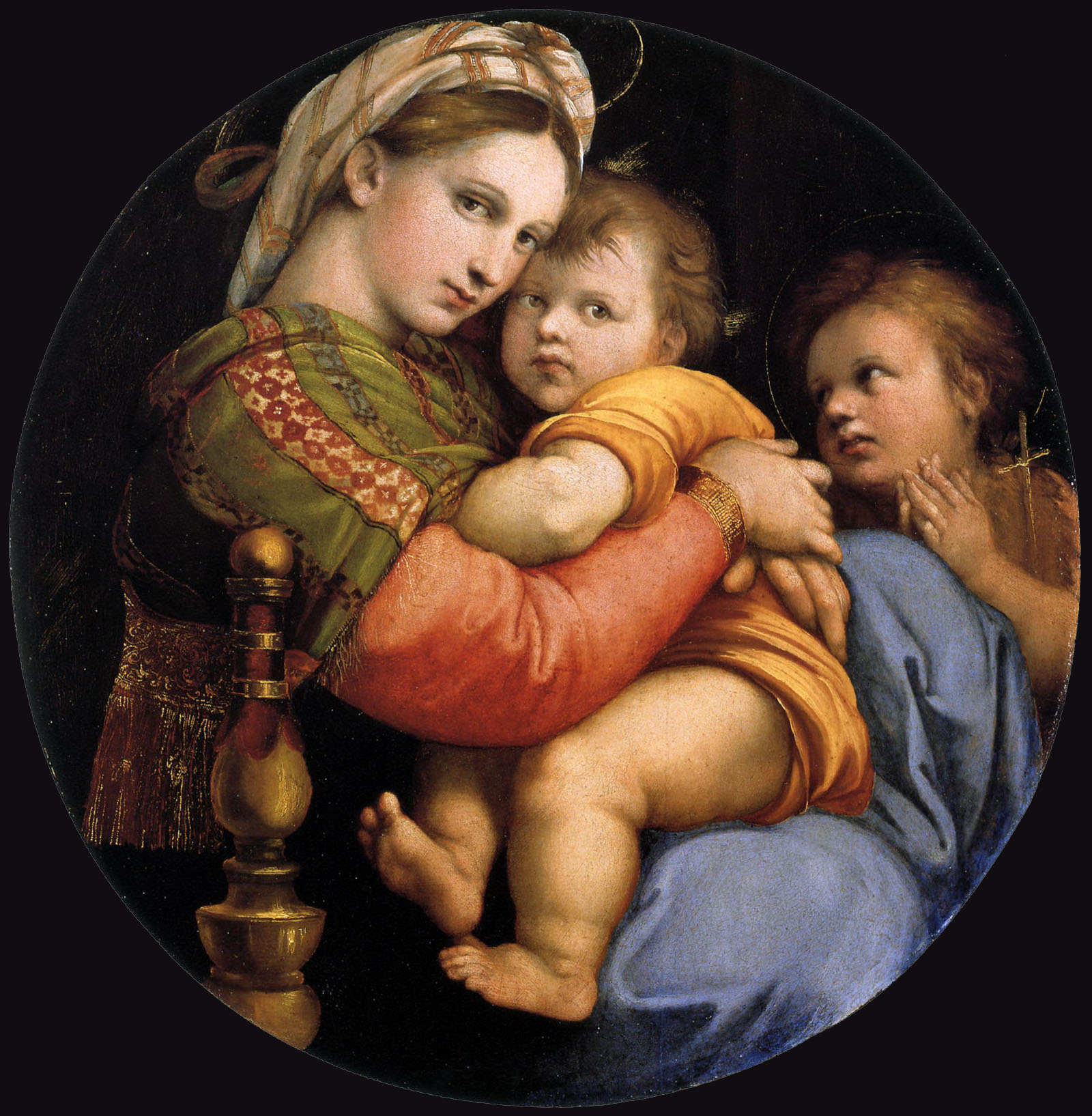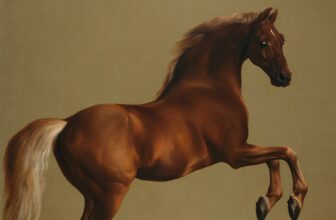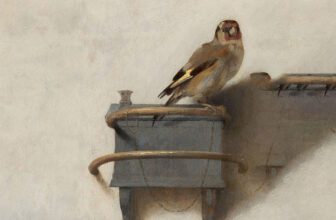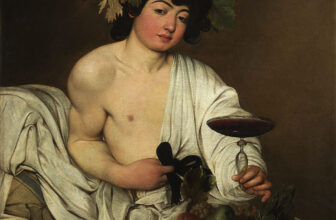
The Story Behind Raphael’s Madonna della Seggiola
In the heart of Florence, nestled within the grand halls of the Palazzo Pitti, one of the most tender and beloved masterpieces of the Italian Renaissance quietly awaits the gaze of art lovers from around the world. This painting, Madonna della Seggiola, translated as Madonna of the Chair, is not merely a triumph of technical mastery but a moving testament to maternal love, spiritual protection, and divine serenity. Painted by the great High Renaissance artist Raphael (Raffaello Sanzio da Urbino), the Madonna della Seggiola is more than a work of art; it is a visual lullaby, capturing a sacred intimacy that has spoken to hearts for over 500 years.
Who Painted Madonna della Seggiola?
The master behind this celebrated painting is Raphael, one of the towering figures of the Italian Renaissance. Born in 1483 in Urbino, Italy, Raphael was a prodigy who matured into one of the most sought-after artists of his time. He was celebrated for his sublime sense of composition, graceful figures, and ability to imbue divine subjects with a profound human touch. Alongside Leonardo da Vinci and Michelangelo, Raphael completed the holy trinity of Renaissance genius, but he distinguished himself with a gentleness and clarity of expression that made his Madonnas some of the most cherished images in Christian art.
The Madonna della Seggiola was painted around 1513–1514, during the height of Raphael’s artistic maturity. By this time, he had already become the chief architect of St. Peter’s Basilica in Rome and the favorite painter of Pope Julius II. His reputation was unmatched, and his commissions were both prolific and prestigious. Yet despite the demands of the papal court and monumental fresco cycles, Raphael never abandoned his affection for the Madonna and Child, a subject he returned to time and again with ever-deepening tenderness.
What Is the Meaning of Madonna della Seggiola?
On its surface, Madonna della Seggiola portrays a simple scene: the Virgin Mary cradles the Christ Child in her arms, while a young John the Baptist looks on. But beneath its serene beauty lies a rich tapestry of spiritual symbolism and emotional resonance.
At its core, the painting celebrates maternal love, divine protection, and the quiet dignity of motherhood. Mary’s embrace is both protective and affectionate, enveloping the Christ Child with a warmth that is palpably human. This depiction diverges from the more formal, regal Madonnas of earlier medieval traditions. Here, Raphael presents Mary not on a throne but seated in a humble wooden chair, enveloped in an almost domestic serenity. This choice infuses the sacred with the familiar, inviting the viewer to see the Holy Family not only as celestial figures but as reflections of everyday love and care.
Christ, nestled in Mary’s arms, returns her gaze with a trusting intensity. His small arms are wrapped tightly around her neck, reinforcing the bond between mother and son. There is no trace of grandeur or judgment here, only a child in the comfort of his mother’s arms. The young John the Baptist, with his hands clasped in reverence and eyes full of wonder, acts as both witness and participant, representing humanity’s awe and devotion before the Incarnation.
In this composition, Raphael weaves together theological meaning with profound emotional realism. The chair (or “seggiola”) is symbolic not only of domesticity but also of stability and continuity. Mary, often seen as the Throne of Wisdom, is literally seated on a chair, emphasizing her role as the bearer of divine wisdom and love. The circular composition, discussed below, further enhances the idea of unity, eternity, and spiritual harmony.
Who Are the Three Figures in Madonna della Seggiola?
The painting features three central figures, each rich in symbolic significance:
The Virgin Mary: She is the largest and most central figure, her body gracefully curved around the Christ Child in a protective embrace. She wears a vivid green robe and a red gown, her head covered with a beautifully patterned scarf or turban. Her expression is calm yet intense, radiating both maternal affection and quiet strength. Her protective gesture echoes the timeless archetype of the nurturing mother.
The Christ Child: Jesus is portrayed as a chubby, affectionate toddler. He clings to Mary with childlike dependence, his arms wrapped tightly around her neck. His gaze is serene, looking slightly out of the picture, suggesting both his human vulnerability and divine omniscience. Raphael presents Christ not as a distant deity but as a child deeply connected to his mother, human in every way, yet radiating sacred light.
Saint John the Baptist (as a child): The young John is often included in Madonna and Child paintings, representing the forerunner of Christ. Here, he stands beside the mother and child, holding a slender wooden staff (a traditional symbol of his future mission) and wearing a camel-hair garment, alluding to his ascetic life. His hands are clasped in a prayerful pose, and he gazes in admiration and devotion at his divine cousin.
These three figures form a tightly-knit triangle of connection, emotional, spiritual, and compositional, that reflects both the Christian Holy Family and the universal ideals of love, reverence, and faith.
What Type of Art is Madonna della Seggiola?
Madonna della Seggiola is a quintessential example of High Renaissance painting, a style that emphasized balance, harmony, idealized beauty, and psychological depth. More specifically, it is a religious portrait and a tondo, which is a circular painting or relief. The tondo format was popular in the Renaissance for private devotion, and Raphael’s use of this format here is especially masterful.
The circular composition enhances the intimacy of the scene, drawing the viewer’s eye inward in a continuous, embracing movement. Raphael uses chiaroscuro (the interplay of light and shadow) with finesse to model the figures, giving them lifelike volume and depth. The color palette is warm and rich, with vibrant reds, greens, and earthy tones that enhance the emotional warmth of the scene.
What also sets this painting apart is Raphael’s psychological insight. Each figure displays a unique emotional state, yet they are harmoniously connected. The composition is compact but never crowded, serene but never static. Raphael’s ability to fuse the human and divine, the formal and the intimate, is on full display in this modest-sized yet deeply powerful work.
Where is the Madonna della Seggiola Painting Located Today?
Today, Madonna della Seggiola resides in the Palatine Gallery of the Palazzo Pitti, located in Florence, Italy. The Palazzo Pitti is a grand Renaissance palace that once served as the residence of the powerful Medici family and later the ruling dynasties of the Grand Duchy of Tuscany. Now part of the Uffizi Galleries, the Palatine Gallery houses an extraordinary collection of paintings, and Madonna della Seggiola is one of its crown jewels.
The painting’s placement in Florence is fitting. Raphael spent formative years in Florence, absorbing the influences of Leonardo da Vinci and Michelangelo. Although Madonna della Seggiola was likely painted during Raphael’s Roman period, its return to Florence reconnects it with the artistic soil that nurtured his genius.
Visitors to the Palazzo Pitti often find themselves drawn not only to the painting’s exquisite detail and color but to the palpable emotion it radiates. Despite its modest size, Madonna della Seggiola has a magnetic presence, inviting contemplation and admiration from all who encounter it.
The Legacy of Madonna della Seggiola
More than five centuries after its creation, Raphael’s Madonna della Seggiola continues to captivate hearts and minds. Its impact has transcended religious devotion to become a universal symbol of love, protection, and grace. The painting has been reproduced countless times, inspiring artists, poets, and admirers alike.
What makes Madonna della Seggiola so enduring? Perhaps it is the way Raphael humanized the divine. His Madonna is not distant or idealized to the point of abstraction, she is warm, real, touchable. The painting invites us not to worship from afar, but to feel, to remember the comfort of a mother’s arms, to reflect on the sacred in the everyday.
Moreover, the painting exemplifies the Renaissance ideal of art as a mirror of human experience, a way to understand both the earthly and the eternal. In the simple act of a mother holding her child, Raphael found a universal truth and rendered it with such grace that it continues to speak across cultures and centuries.
As we stand before Madonna della Seggiola, we do not merely look at a painting, we feel its embrace. And in that embrace, we find something eternal.




